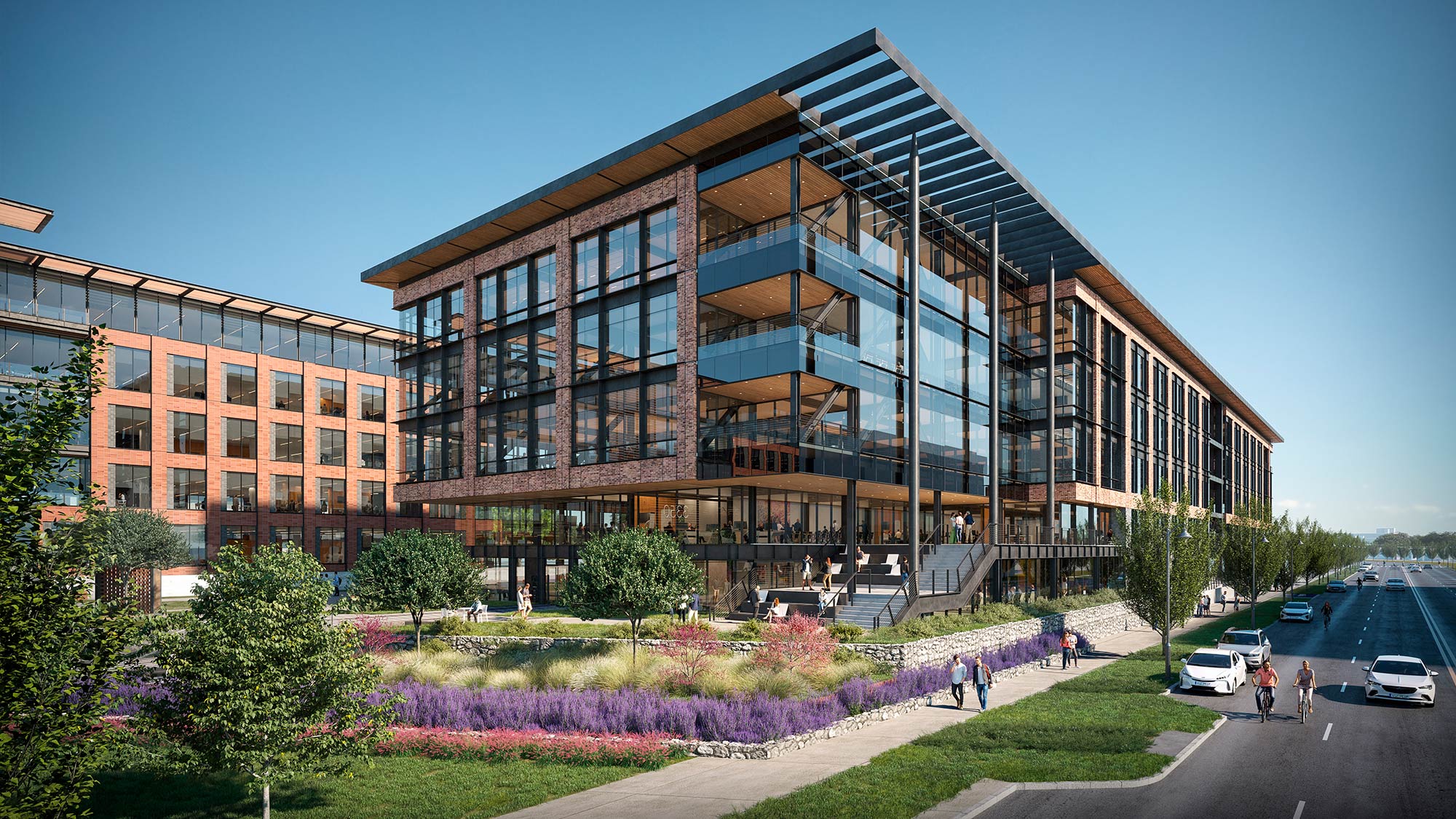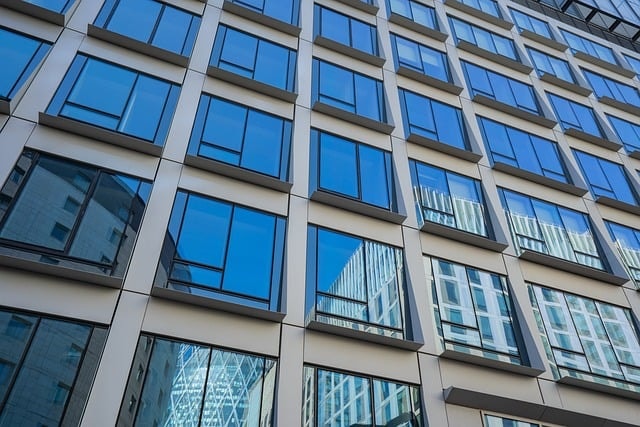- RISE Realty's Newsletter
- Posts
- BOMA 2024: Office Buildings' Future Coming into View
BOMA 2024: Office Buildings' Future Coming into View
Unlock new opportunities in the real estate sector.
The Building Owners and Managers Association (BOMA) International is a leading advocacy organization for the commercial real estate industry. Every few years, BOMA updates its standards and guidelines to reflect changes in technology, market trends, and best practices.
In 2024, BOMA will be releasing an updated version of its Office Buildings: Standard Methods of Measurement (ANSI/BOMA Z65.1). This update aims to address current challenges faced by building owners and managers while also unlocking new opportunities for efficiency and sustainability.
In this document, we will discuss the key updates that BOMA 2024 will bring for office buildings, and how these changes can benefit building owners and managers. From incorporating new measurement methods to promoting the use of sustainable practices, BOMA 2024 is set to revolutionize the way we measure and manage office spaces.
Why is BOMA important for Office Buildings?
BOMA standards and guidelines are widely recognized and used in the commercial real estate industry. They provide a common language for measuring and managing buildings, which is essential for accurate communication among stakeholders.
Furthermore, BOMA standards have a significant impact on property values, lease negotiations, and building operations. Compliance with BOMA standards can also improve a building's marketability and attract potential tenants.
In short, BOMA is crucial for office buildings as it ensures consistency, accuracy, and transparency in measurement and management practices. Now, let's take a closer look at the updates that BOMA 2024 will bring to the table.
Overview of the BOMA 2024 updates
The BOMA 2024 Office Standard introduces key updates to improve how floor areas in office buildings are measured. These updates include the inclusion of Qualifying Unenclosed Occupant Service Areas and at-grade Unenclosed Areas in Rentable Area calculations, potentially increasing rental income. Tenant Storage Areas and Unenclosed Tenant Areas are also included in Rentable Area without Load Factors. A new category, "Non-Allocated Tenant Areas," covers Unenclosed Tenant Areas, Tenant Storage Areas, and Single Tenant Shafts, which are excluded from Load Factor calculations.
The term "Inter-Building Areas" has been renamed to "Inter-Allocated Areas" for better clarity. The standard now supports features typical in Life Science Office Buildings, such as tenant shafts and rooftop equipment. Simplifications and clarifications have been made to Method B, and additional guidance is provided for Unenclosed Occupant Circulation and Exterior Door Setback.
Lastly, BOMA Best Practices have been incorporated throughout the standard to enhance measurement accuracy and consistency. These changes reflect a more flexible approach to space categorization and align with evolving building designs and tenant needs.
Unveiling the Transformations Since 2017
The BOMA 2024 Office Standard introduces significant transformations compared to the 2017 Standard, aiming to reflect the evolving needs of the commercial real estate market. One of the notable updates is the inclusion of Qualifying Unenclosed Occupant Service Areas and at-grade Unenclosed Areas in Rentable Area calculations. This allows certain outdoor spaces, previously excluded, to contribute to the building’s rental income potential.
Tenant Storage Areas and Unenclosed Tenant Areas are now included in the Rentable Area without applying Load Factors. Additionally, a new category called "Non-Allocated Tenant Areas" has been introduced, encompassing Unenclosed Tenant Areas, Tenant Storage Areas, and Single Tenant Shafts. These areas are not included in Load Factor calculations, ensuring more precise space measurements.
The term "Inter-Building Areas" has been renamed to "Inter-Allocated Areas" to enhance clarity, describing spaces serving multiple buildings or tenants within a complex. The new standard also supports features found in Life Science Office Buildings, including specialized lab spaces and rooftop equipment areas.
Simplifications and clarifications have been made to Method B, making it easier to implement, and additional guidance is provided for handling Unenclosed Occupant Circulation and Exterior Door Setbacks. Moreover, BOMA Best Practices have been incorporated throughout the standard, promoting accuracy and consistency in office building measurements.
Since 2017, the BOMA standards have not included many changes regarding what can be added to common areas. However, the BOMA 2024 for Office Buildings: Standard Methods of Measurement (ANSI/BOMA Z65.1-2024) has introduced new allowances benefiting landlords by permitting additional features in these spaces.
These updates highlight BOMA’s commitment to more holistic and flexible space categorization and calculation, aligning with contemporary building designs and tenant requirements. Buildings previously measured under the 2017 Standard with exterior areas will notice changes in Building Load Factors with these new inclusions.
Permitted enhancements to common areas as outlined in the 2024 update
The BOMA 2024 Office Standard introduces several enhancements to common areas, reflecting the evolving needs of the commercial real estate market and benefiting landlords by permitting additional features in these spaces. One of the notable updates is the inclusion of Qualifying Unenclosed Occupant Service Areas and at-grade Unenclosed Areas in Rentable Area calculations. This change allows certain outdoor spaces, previously excluded, to contribute to the building’s rental income potential.
Tenant Storage Areas and Unenclosed Tenant Areas are now included in the Rentable Area without applying Load Factors. This means that storage areas designated for tenant use and unenclosed tenant spaces like private balconies, rooftop terraces, and restaurant patios are accounted for in the Rentable Area calculations without additional Load Factors, offering a more precise measurement.
The introduction of "Non-Allocated Tenant Areas," encompassing Unenclosed Tenant Areas, Tenant Storage Areas, and Single Tenant Shafts, ensures these spaces are excluded from Load Factor calculations. This category provides a clearer understanding of space usage and allocation.
The renaming of "Inter-Building Areas" to "Inter-Allocated Areas" enhances clarity, describing spaces that serve multiple buildings or tenants within a complex. Additionally, the new standard supports features typical in Life Science Office Buildings, such as specialized lab spaces and rooftop equipment areas, accommodating the unique needs of these industries.
Simplifications and clarifications to Method B and additional guidance for handling Unenclosed Occupant Circulation and Exterior Door Setbacks further enhance the standard. Moreover, the incorporation of BOMA Best Practices throughout the standard promotes accuracy and consistency in office building measurements.
These updates highlight BOMA’s commitment to more holistic and flexible space categorization and calculation, aligning with contemporary building designs and tenant requirements.
Why these updates matter
The BOMA 2024 Office Standard introduces significant transformations compared to the 2017 Standard, reflecting the evolving needs of the commercial real estate market. These updates are essential for several reasons:
Increased accuracy and consistency: The incorporation of BOMA Best Practices throughout the standard promotes accuracy and consistency in office building measurements.
Flexibility and adaptability: The new standard supports features typical in Life Science Office Buildings, making it more adaptable to different industries' unique needs.
Clarity and simplicity: Simplifications and clarifications have been made to Method B, making it easier to implement and understand.
Fairness for landlords: The updates allow for additional features to be included in common areas, providing a more accurate measurement of rentable space and potential rental income for landlords.
Alignment with contemporary building designs and tenant needs: The new standard aligns with modern building designs and tenant requirements, ensuring a more holistic approach to space categorization and calculation.
These updates demonstrate BOMA's commitment to continuously evolving its standards to reflect the changing commercial real estate landscape accurately. It also highlights the organization's understanding of the importance of precise measurements in determining fair market value for both landlords and tenants. With these updates, the BOMA 2024 Office Standard solidifies its position as a comprehensive and reliable resource for measuring office buildings' rentable space.
Does this impact existing buildings?
The BOMA 2024 Office Standard updates may result in changes for some buildings previously measured under the 2017 Standard with exterior areas. These changes could include an increase or decrease in Building Load Factors and Rentable Area calculations, depending on the features included in the common areas. However, these changes are crucial to ensure a more accurate and fair representation of rentable space in today's diverse commercial real estate market.
Existing buildings will not be required to re-measure their spaces using the new standard unless significant renovations or tenant improvements occur, triggering a remeasurement according to industry standards. The choice to adopt the new standard rests with landlords and property managers, but it is recommended to ensure consistency across the industry and better reflect today's market trends.
PLus, the BOMA 2024 Office Standard updates may also impact future building design and development. By acknowledging and accounting for features like outdoor spaces and specialized lab areas, the new standard provides more flexibility in designing office buildings that cater to different industries' unique needs while still adhering to industry standards.
Implications Of The Updates
The BOMA 2024 Office Standard updates have several implications for landlords, property managers, and tenants. For landlords and property managers, these changes mean a more accurate measurement of rentable space and potential rental income potential. It also allows for greater flexibility in designing common areas that cater to the diverse needs of tenants.
For tenants, these updates provide a fairer representation of rentable space, ensuring they are not paying for unused or unallocated areas. It also gives them a better understanding of their space usage within the building.
Additionally, these updates have implications for building owners and investors. With a more precise measurement of rentable space, the BOMA 2024 Office Standard can be used as a reliable tool for determining fair market value and potential return on investment.
Plus, by aligning with modern building designs and tenant needs, the new standard may also attract a wider range of tenants, leading to increased occupancy rates and potential for higher rental income.
Benefits for Landlords In Adopting The Updates
Adopting the BOMA 2024 Office Standard offers several benefits for landlords. The inclusion of Qualifying Unenclosed Occupant Service Areas and at-grade Unenclosed Areas in Rentable Area calculations allows landlords to monetize previously excluded outdoor spaces, increasing rental income potential. Tenant Storage Areas and Unenclosed Tenant Areas are now factored into Rentable Area without applying Load Factors, enhancing the value of spaces like private balconies and rooftop terraces.
The new category of "Non-Allocated Tenant Areas," which includes Unenclosed Tenant Areas, Tenant Storage Areas, and Single Tenant Shafts, provides clear space usage and allocation, aiding better space management. Renaming "Inter-Building Areas" to "Inter-Allocated Areas" improves clarity in space descriptions, benefiting landlords with more precise allocation.
The updated standard also accommodates Life Science Office Buildings' unique features, attracting a wider range of tenants. Simplifications and clarifications to Method B and additional guidance for Unenclosed Occupant Circulation and Exterior Door Setbacks enhance measurement accuracy and implementation ease. Incorporating BOMA Best Practices ensures consistent and reliable office building measurements, ultimately benefiting landlords through more marketable and accurately assessed spaces.
Tips For A Smooth Transition
To ensure a smooth transition to the BOMA 2024 Office Standard, landlords and property managers should consider the following tips:
Familiarize yourself with the updates: Take the time to understand the changes in the standard and how they may impact your building's measurements. Plus, familiarize yourself with the updated terminology to avoid confusion.
Consider early adoption: Consider adopting the new standard before its mandatory implementation in 2024 to stay ahead of industry trends and maintain consistency with other buildings in your market.
Review lease agreements: Review current and future lease agreements to ensure alignment with the new standard's measurement methodology. This will help avoid any discrepancies or misunderstandings between landlords and tenants.
Communicate with tenants: It is essential to communicate any changes in measurements or building features to tenants, especially if it may impact their rentable space calculations or rental costs.
Seek professional assistance: If necessary, seek the assistance of a professional who is well-versed in the BOMA 2024 Office Standard to ensure accurate and consistent measurements.
By following these tips, landlords and property managers can smoothly transition to the new standard and maximize its benefits for their buildings.
FAQs
What are the key updates in BOMA 2024 for medical office buildings?
The key updates in BOMA 2024 for medical office buildings include revised standards for calculating rentable areas. These updates ensure that specialized tenant areas, such as those requiring specialized equipment, are calculated separately. This enhances tenant satisfaction by providing accurate and fair space measurements tailored to the specific needs of medical office buildings within the overall building ecosystem.






Reply